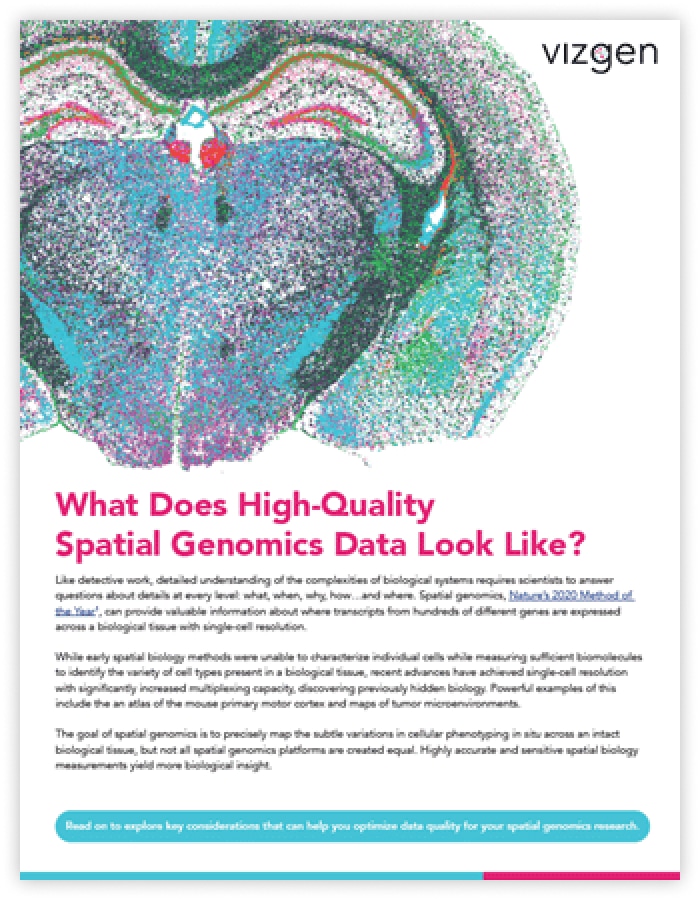Resources Hub
Vizgen is developing the next generation of genomics tools to expand on the capabilities of spatially resolved transcriptomics. Our technology will aide the acceleration of biological research and discovery to advance human health. Access supporting resources by selecting the category below.

Featured Resource
eBook: What Does High-Quality Spatial Genomics Data Look Like?
eBook
Filter
Filter